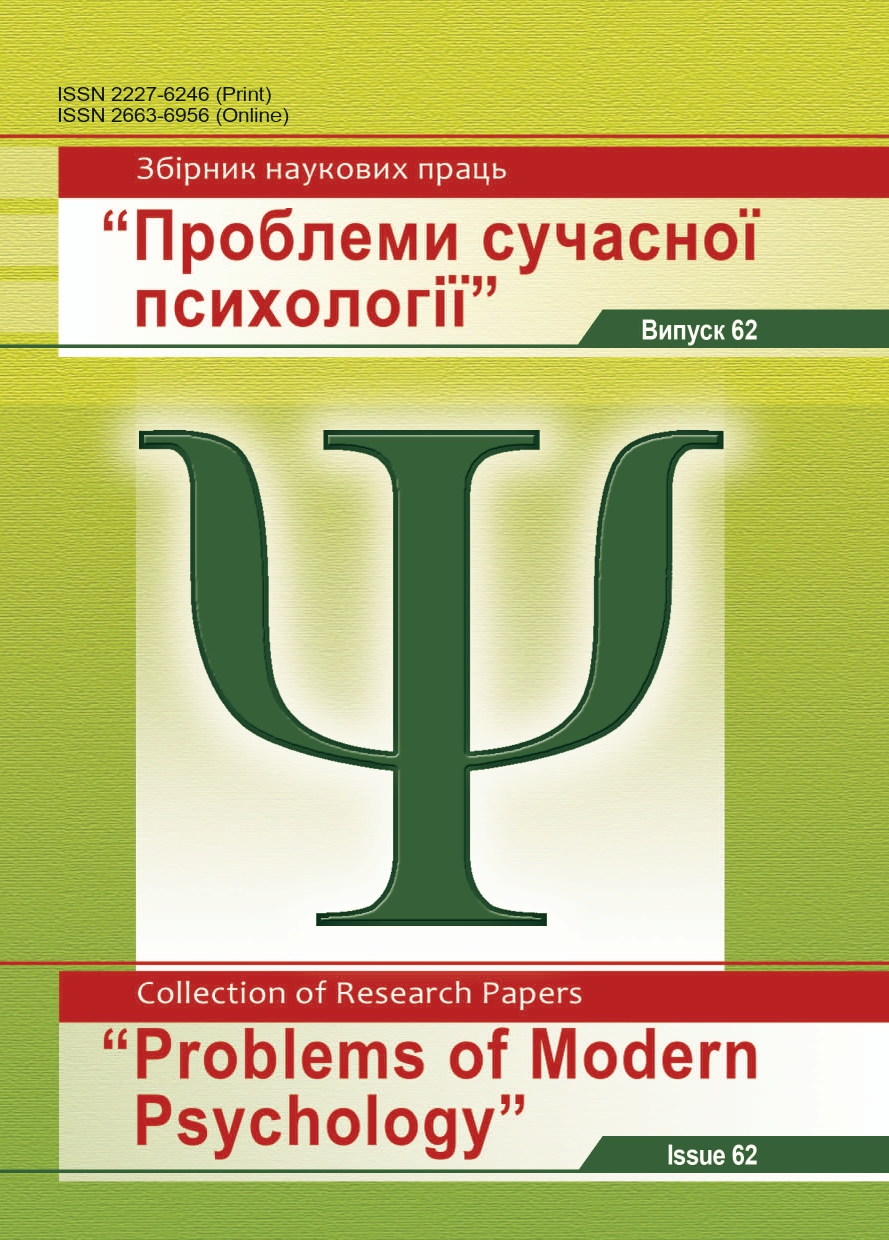Age-Related Differences in the Qualities and Properties of Personality in Relation to the Readiness of Ukrainian Winterers for Life in the Antarctic
DOI:
https://doi.org/10.32626/2227-6246.2023-62.106-125Keywords:
psychological readiness, life activities in Antarctic conditions, professional profile of a winterer, age groups of adulthoodAbstract
The article reveals the age-related differences in the qualities and properties of the personality in the manifestations of indicators of psychological readiness of winterers to extreme living conditions at the Ukrainian Antarctic “Akademik Vernadsky” Station. The wintering of Ukrainian polar explorers conducting scientific research on the coast of Antarctica is associated with a long stay in a limited area in difficult climatic conditions, which can lead to strong emotional and physical stress. It has been proved that stress resistance, adaptability, and psychological readiness for life activities, which are determined by the presence of relevant qualities and personality traits, are important factors in such extreme working conditions.
The aim of the article is to present the theoretical foundations and practical results of research on age-related differences in qualities and personality traits regarding the psychological readiness of Ukrainian winterers for life in Antarctic conditions using the example of 10 expeditions to the Ukrainian Antarctic “Akademik Vernadskyi” Station.
Methods. A set of methods of psychological research on the qualities and personality traits of winterers of different age groups was used. 71 winterers took part in the experiment, they are participants of Ukrainian Antarctic expeditions during the year from 2011 to 2021.
The results of the research. There were 3 age groups of winterers – mature, middle and young. The components of the professional profile of a winter worker are clarified. As the result of the questionnaire, the qualities and attributes of the personality that contribute to or hinder the performance of professional activities of winter workers are determined. The results of empirical research on the presence of personality qualities and attributes in winterers of different age groups, which are defined as those that ensure the effectiveness of professional activities during wintering, are presented.
Conclusion. It is proved that the greatest number of positive qualities and personality traits, according to the defined professional profile of a winter worker, are demonstrated by representatives of mature age – winter workers aged 46-64 years. It is recommended to include winterers of a certain age in the Ukrainian Antarctic expeditions in a sufficient number (not less than 30% of the total composition of the expedition members), which will ensure the appropriate level of psychological stability of the teams of winterers.
Downloads
Published
How to Cite
Issue
Section
License
Copyright (c) 2023 Miroshnychenko Olena

This work is licensed under a Creative Commons Attribution-NonCommercial 4.0 International License.
Copyright
The Editorial Board has the full right to publish original scientific papers containing results of theoretical and experimental research works which are not currently subject to review for publication in other scientific editions. The Author shall transfer to the editorial board of the Collection the right to spread the electronic version of the paper, as well as the electronic version of the paper translated into English (for papers originally submitted in Ukrainian and Russian) by all kinds of electronic means (placement at the official website of the Collection, electronic databases, repositories etc).
The Author of an article reserves the right to use materials of the paper, without approval with the editorial board and the founders of this Collection: a) partially or fully, for educational purposes; b) for writing own dissertation papers; c) for preparation of abstracts, conference reports and presentations.
The Author of an article can place electronic copies of the paper (including the final electronic version downloaded from the official website of the Collection) at:
- personal web resources of all Authors (websites, webpages, blogs etc.);
- web resources of the institutions where the Authors are employed (including electronic institutional repositories);
- non-profit public access web resources (for example, arXiv.org).
But in all cases, it is obligatory to have a bibliographic reference to the paper, or a hyperlink to its electronic copy placed at the official website of this Collection.






